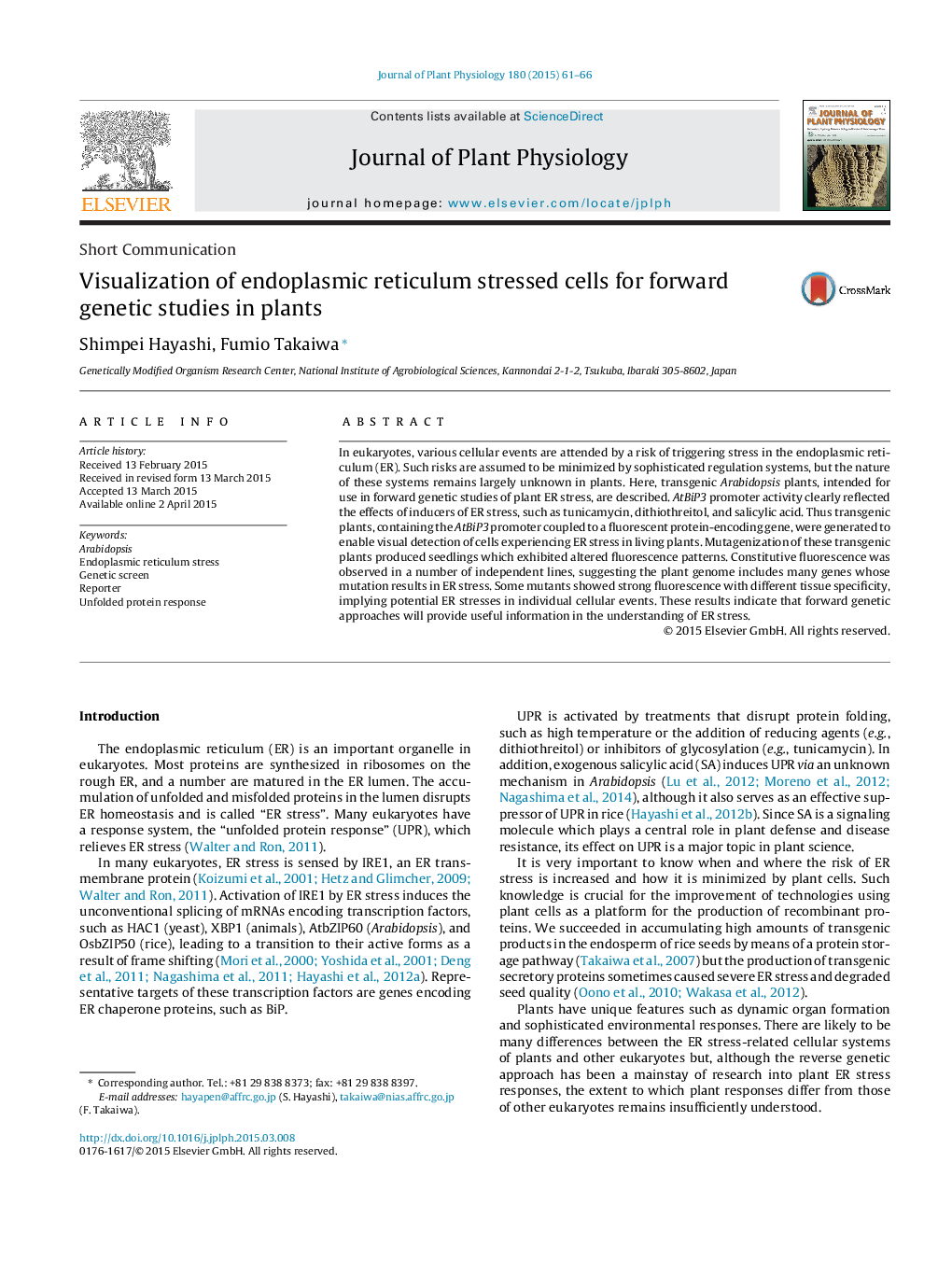| Article ID | Journal | Published Year | Pages | File Type |
|---|---|---|---|---|
| 2055551 | Journal of Plant Physiology | 2015 | 6 Pages |
In eukaryotes, various cellular events are attended by a risk of triggering stress in the endoplasmic reticulum (ER). Such risks are assumed to be minimized by sophisticated regulation systems, but the nature of these systems remains largely unknown in plants. Here, transgenic Arabidopsis plants, intended for use in forward genetic studies of plant ER stress, are described. AtBiP3 promoter activity clearly reflected the effects of inducers of ER stress, such as tunicamycin, dithiothreitol, and salicylic acid. Thus transgenic plants, containing the AtBiP3 promoter coupled to a fluorescent protein-encoding gene, were generated to enable visual detection of cells experiencing ER stress in living plants. Mutagenization of these transgenic plants produced seedlings which exhibited altered fluorescence patterns. Constitutive fluorescence was observed in a number of independent lines, suggesting the plant genome includes many genes whose mutation results in ER stress. Some mutants showed strong fluorescence with different tissue specificity, implying potential ER stresses in individual cellular events. These results indicate that forward genetic approaches will provide useful information in the understanding of ER stress.
